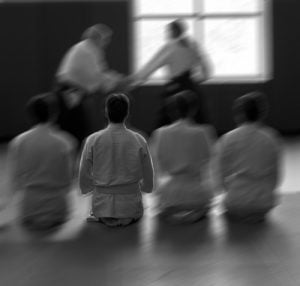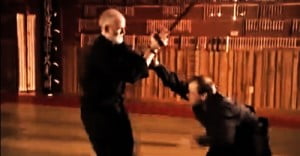Could a unique ninja martial art have evolved from regular samurai combat techniques, to make the shinobi more effective at their jobs? Is this what modern ninjutsu is?
This is a speculative exploration on how regular samurai bujutsu may have evolved into a unique shinobi marital art. It features the perspectives of Eric Shahan (a dojo-cho in Jinenkan) and observations on Banke Shininobinoden’s fighting techniques.
Now, a brief refresher…
The previous article on ninja martial arts established that fighting instructions were absent within the three historical ninja texts. Also, a unique ninja fighting style has yet to be proven to exist. It was therefore deduced that ninja martial arts were regular hand-to-hand and weapon techniques used by the samurai.
Yet, the shinobi’s job was different from regular samurai.
Espionage missions prioritised safe escape over fighting, unless when absolutely unavoidable or hunting criminals. These exceptions came with some tactics specified in the Bansenshukai to help ninja gain the upper hand. So, could these tactics have been refined over the years to become a unique combat system passed down by shinobi families?
While present historical records cannot prove this, what do modern practitioners think?
Modern Ninjutsu Perspective: Ninja martial arts evolved?
When it comes to modern ninjutsu schools, there are four reputable organisations that can be traced to Japan: Organisations that teach martial arts and ninjutsu transmitted by Toshitsugu Takamatsu (i.e. Bujinkan, Jinenkan and Genbukan) and Banke Shinobinoden. While none can prove their lineages back to the Sengoku or Edo period, their founders are deeply involved in ninjutsu research.
For this exploration, I emailed Eric Shahan from Jinenkan and a representative at Banke Shinobinoden Spain. Keep in mind that this is purely speculative and digs into the experiences of people within their respective arts.
Ninja Combat – Eric Shahan (Jinenkan) Perspective
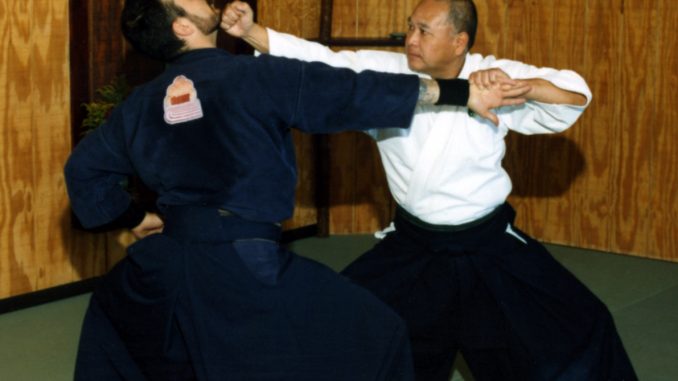
Eric Shahan is a respected translator of many historical Japanese martial arts and warrior books, such as the Ninjutsu No Gokui and The Complete Martial Arts of Japan (several volumes). He is also the present head representative (dojo-cho) of the Jinenkan dojo located in Matsuodo, Chiba (Japan).
His responses are in quotation boxes.
Togakure-ryu Ninjutsu and Martial Arts
Togakure-ryu is a ninjutsu ryuha that exist within the Bujinkan, Jinenkan and Genbukan. Eric talks about the curriculum when asked about its focus on martial arts over shinobi-no-jutsu (i.e. ninjutsu).
Togakure Ryu Techniques
There are different groups that train in different ways with different focus. In the Jinenkan we train the techniques in the Togakure Ryu. Togakure Ryu has taijutsu, or hand to hand techniques, as well as Biken, or secret sword techniques. We also do Suiton, or water techniques/escapes, that cover different ways to swim as well as how to swim while restrained and fighting in water.
Finally there is Doton, or ground escapes/techniques, that deals with laying ambushes.
Eric Shahan
Many techniques mentioned are done with an underlying shinobi espionage-oriented mindset. Suiton and Doton also appear to be enhancements to the regular martial arts of the ninja; these skills would certainly have helped the ninja gain an edge over their enemies.
This Togakure-ryu Biken video shows how altered weapons and techniques may have given ninja an advantage over their adversaries.
Since Biken intrigued me, I pressed Eric for details on how secret sword techniques differed from typical sword techniques.
Biken
Well for the techniques you are wearing Shukko, spiked claws on your hands so it takes training to get used to manipulating the sword. They are an advantage with hand-to-hand but can be cumbersome when holding a sword if you do not practice.
Eric Shahan
What Martial Arts Did Ninja Train In?
Iga and Koga
Originally the people of the Iga and Koga regions of Japan lived very close together in a mountainous region. Their territories were small and they had to rely heavily on espionage to ensure they weren’t taken over by their neighbors. They were born into it so to speak.
Eric Shahan
Eric emphasised that espionage played a huge role in Iga and Koga defense strategy.
But how so? I prodded him further on how espionage and terrain might have influenced martial arts in the region.
Possible ninja fighting style adaptation
I guess as the terrain was more extreme the fighting style was adapted to it. Also the various groups of people were on smaller sections of land, due to the terrain, and were therefore in closer proximity than other domains.
Eric Shahan
Difference between Ninja & Regular Martial Arts?
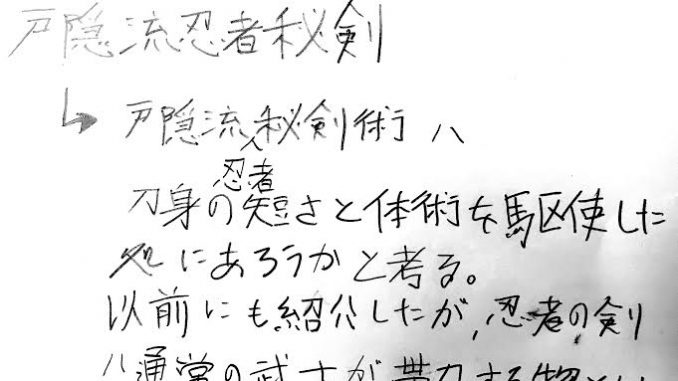
Differences in martial arts
Every school of martial arts in Japan has some elements that are similar and some that are different. The Koga and Iga evolved a way of doing things that suited their environment. I think Fujita Seiko and Gingetsu Itoh both said that while there are some 25 odd schools of Ninjutsu that we know about today, they all originate from either the Iga or the Koga lines.
Oh, I’d also like to add that though many small weapons, like kusari fundo and kusari gama, are thought of as being primarily part of Ninjutsu they appear in other Ryu, as do metsubushi and shuriken.
Eric Shahan
As pointed out by Eric Shahan, some weapons thought to be exclusive to the ninja appear in other martial arts.
And since differences in ninja combat techniques and weapons were hard to identify, I followed up with a question on the fundamental differences that made shinobi martial arts, shinobi martial arts.
Fundamental difference in ninja combat
That is the question indeed. I have only studied Togakure Ryu Ninjutsu. The main difference there is that your priority is to get away, not to defeat the opponent. You strike, dive away and try to conceal yourself. You would always have metsubushi and shuriken on your person.
As to how different I do not have any specifics only circumstantial evidence. Tokugawa Ieyasu made use of the people of Iga and the people of Koga. Why? Because they had something his other troops didn’t.
Eric Shahan
Each martial art clearly has a fundamental principle behind its combat techniques – whether it is Aikido, Karate or Budo Taijutsu. And what Eric Shahan has identified about Togakure-ryu Ninjutsu martial arts is consistent with the needs of the shinobi profession.
Note: Tokugawa Ieyasu was the shogun who ultimately united Japan and brought an end to the Sengoku period, a turbulent period of constant wars. He was said to have employed the shinobi from the said regions into the ranks within his government.
Eric Shahan’s Translated Works
Please support Eric Shahan’s efforts in translating old Japanese books for the English-speaking world. These are some of his translated works of pre-modern Japanese manuals about ninjutsu and martial arts.



Ninja Combat – Banke Shinobinoden Perspective
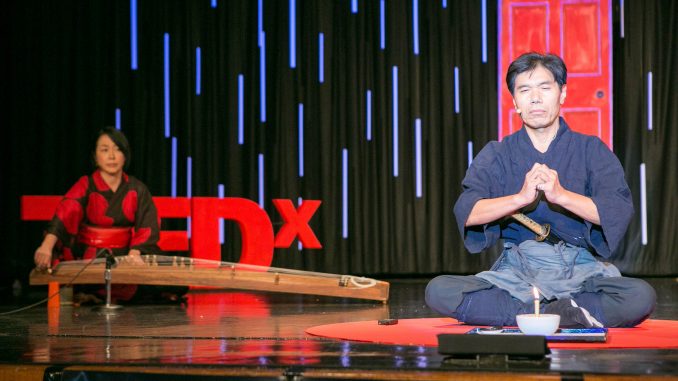
José Defez of Banke Shinobinoden Spain responded to my email. However, he might have misunderstood that my questions were asked as a curious potential student. His kind response was appended with a list of links about Banke Shinobinoden’s bujutsu. Thus, the exploration will include those resources as a basis.
Banke Shinobinoden Martial Arts
Unlike Takamatsu Ninjutsu organisations, Banke Shinobinoden separates shinobi-no-jutsu (ninjutsu) and bujutsu (martial art) as distinct ninja training disciplines. We will only focus on its bujutsu syllabus and determine if there are alterations that make ninja combat techniques superior to regular martial arts.
Banke Shinobinoden’s bujutsu includes empty-hand and weapons fighting techniques from several Koga ryuha that were passed down to the Ban family. Intrigingly, their weapons-based syllabus include archery on horseback and blowguns, other than the large number of regular Japanese weapons. This seems to be consistent with the deduction that ninja martial arts are regular samurai martial arts.
However, based on observations, there seem to be alterations that made their bujutsu advantageous against regular samurai combat.
Altered Ninja Fighting Techniques (Banke Shinobinoden)
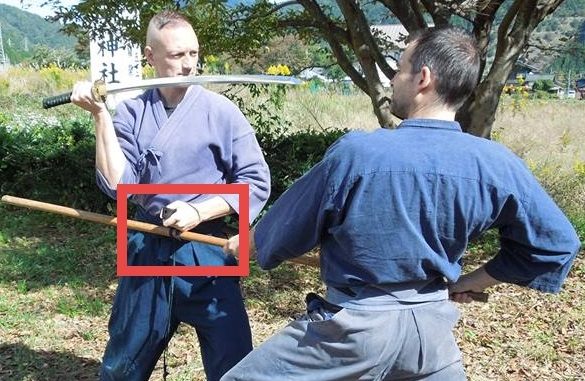
According to Jinichi Kawakami, ninja techniques are not for fighting. If it was ever necessary, the cost had to be kept minimal so as to not draw significant attention. As such, ninja fighting techniques were purposed to avoid danger (i.e. avoid attacks) and avoid being knocked down.
Implicit in the demonstration during Cool Japan’s visit to Banke Shinobinoden Japan were four observations:
4 Observations on Banke Shinobi Martial Arts
Unconventional tactics – weapons would be used in unpredictable ways that the enemy were not used to, thereby giving the shinobi the advantage. […]
Distraction tactics – often times common tools and objects were used to distract rather than to maim.
Use of common objects in their surroundings – historical sources suggest that ninja did not carry special weapons that would expose their identity. Using common items in a fight makes sense.
Running away – according to Jinichi Kawakami, shinobi sought to minimise the cost of fighting; this essentially means fleeing when possible (or setting up a fight that makes fleeing easier).
– Originally from Banke Shinobinoden Demonstrate Ninjutsu Techniques
What Modern Ninjutsu Schools offers in ninja combat?
The shinobi’s espionage-oriented mindset clearly influenced the martial arts of the four modern ninjutsu organisations. This is evident from the use unconventional tactics to gain an edge against adversaries. These tactics include adjustments to weapons (i.e. katana length), distracting the opponent, using unusual sword forms (that deviates from what the enemy expects) and more.
Moreover, Eric Shahan believes that the terrain within Iga and Koga, combined with reliance on espionage, might have influenced ninja fighting techniques.
Assuming that the shinobi had a unique martial art, it would have started out as regular samurai bujutsu and then evolved.
While this cannot be validated by the three historical manuals and is a speculative exploration, modern ninjutsu martial arts have certainly incorporated the ninja mindset to make their fighting techniques more effective. Therein lies your advantage if you choose to train in modern ninjutsu martial arts.
Read the historical perspective and other articles on ninja martial arts below.
Related Articles: Ninja Martial Arts & Modern Ninjutsu Schools
- Historical Perspective on Ninja Martial Arts
- Antony Cummins on Ninja Martial Arts (Historical Ninjutsu Researcher)
- Upcoming: Martial Arts for the Modern Ninja

